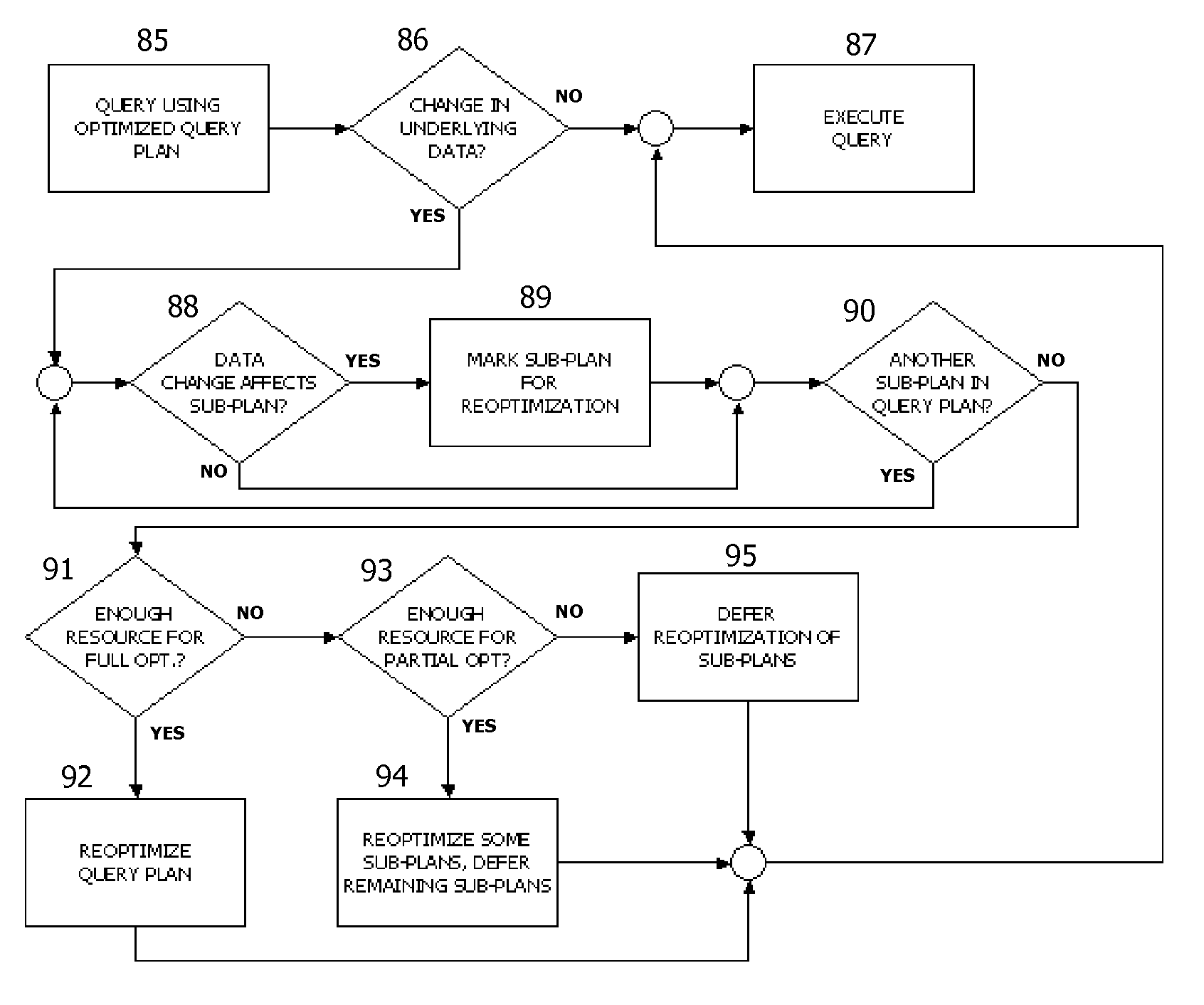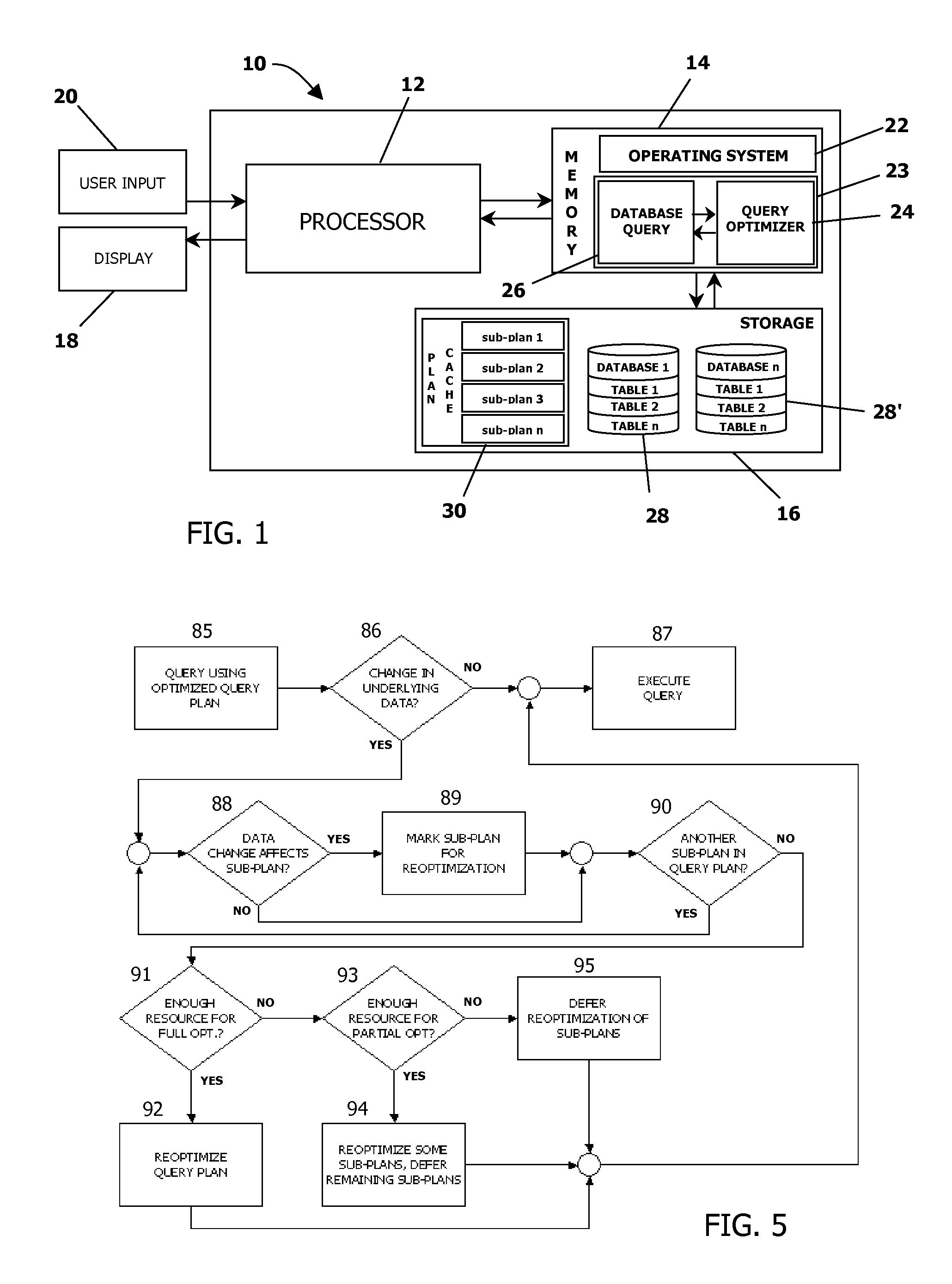Portable and iterative re-usable suboptimization of database queries
a database and query technology, applied in the field of database query optimization, can solve the problems of query optimization, search space can become quite large depending, and it is impossible, or at least inadvisable, to try all possibilities
- Summary
- Abstract
- Description
- Claims
- Application Information
AI Technical Summary
Benefits of technology
Problems solved by technology
Method used
Image
Examples
Embodiment Construction
[0025]Turning to the drawings, wherein like numbers denote like parts throughout the several views, FIG. 1 illustrates an exemplary hardware and software environment for an apparatus 10 suitable for implementing query optimization consistent with the invention. For the purposes of the invention, apparatus 10 may represent practically any computer, computer system, or programmable device e.g., multi-user or single-user computers, desktop computers, portable computers and devices, handheld devices, network devices, mobile phones, etc. Apparatus 10 will hereinafter be referred to as a “computer” although it should be appreciated that the term “apparatus” may also include other suitable programmable electronic devices.
[0026]Computer 10 typically includes at least one processor 12 coupled to a memory 14. Processor 12 may represent one or more processors (e.g. microprocessors), and memory 14 may represent the random access memory (RAM) devices comprising the main storage of computer 10, a...
PUM
 Login to View More
Login to View More Abstract
Description
Claims
Application Information
 Login to View More
Login to View More - R&D
- Intellectual Property
- Life Sciences
- Materials
- Tech Scout
- Unparalleled Data Quality
- Higher Quality Content
- 60% Fewer Hallucinations
Browse by: Latest US Patents, China's latest patents, Technical Efficacy Thesaurus, Application Domain, Technology Topic, Popular Technical Reports.
© 2025 PatSnap. All rights reserved.Legal|Privacy policy|Modern Slavery Act Transparency Statement|Sitemap|About US| Contact US: help@patsnap.com



